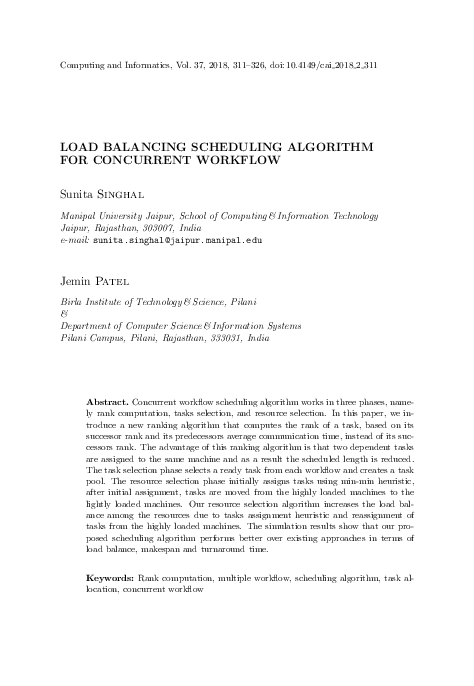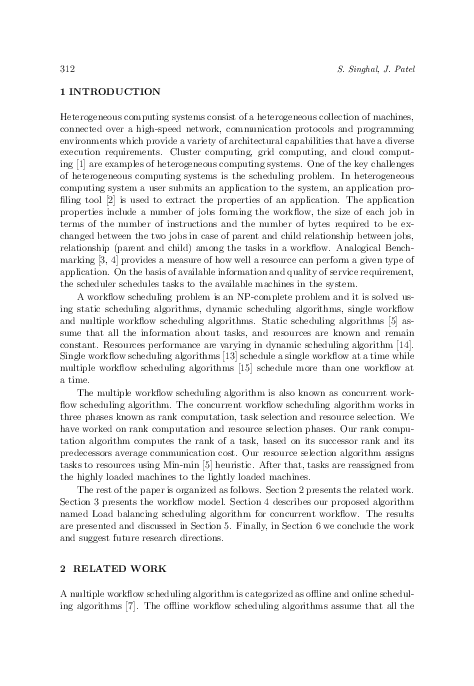Load Balancing Scheduling Algorithm for Concurrent Workflow
keywords: Rank computation, multiple workflow, scheduling algorithm, task allocation, concurrent workflow
Concurrent workflow scheduling algorithm works in three phases, namely rank computation, tasks selection, and resource selection. In this paper, we introduce a new ranking algorithm that computes the rank of a task, based on its successor rank and its predecessors average communication time, instead of its successors rank. The advantage of this ranking algorithm is that two dependent tasks are assigned to the same machine and as a result the scheduled length is reduced. The task selection phase selects a ready task from each workflow and creates a task pool. The resource selection phase initially assigns tasks using min-min heuristic, after initial assignment, tasks are moved from the highly loaded machines to the lightly loaded machines. Our resource selection algorithm increases the load balance among the resources due to tasks assignment heuristic and reassignment of tasks from the highly loaded machines. The simulation results show that our proposed scheduling algorithm performs better over existing approaches in terms of load balance, makespan and turnaround time.
reference: Vol. 37, 2018, No. 2, pp. 311–326


